Ian messaged me to see if I fancied a trip to Fife on Monday. My answer was a definite yes, so plans were made to finalise details on Sunday evening. Unfortunately the weather forecast for Fife was mostly rather wet. However, Angus looked a better bet, with the rain having moved south from Montrose by around 0900. As Ian would be picking me up around 0800, it would be close to 0900 before we reached Montrose Basin where we planned to start our day's birding. From there we would work our way back down the coast and hopefully the weather would be on our side. In addition to the wet start it was also forecast to be rather windy which tends not to be the greatest conditions for seeing a lot of birds. In our favour was the fact that a lot of what we were likely to see would be new for the year.
 |
Great Northern Diver
|
I headed out to meet Ian just before 0800. Thankfully the heavy rain which had been forecast hadn't yet arrived though it was rather cold. Herring Gull, Blackbird, Robin and Carrion Crow were noted in the gloom before Ian arrived. We added Mallard as we passed Swannie Ponds though given the lack of light and the windy conditions it proved difficult to see much more en route, and even moreso when the rain did actually arrive. As the light levels rose a little we were able to add Jackdaw and Woodpigeon to the list. The rain got steadily heavier as we drove towards Montrose with an obvious line of rain ahead of us. It appeared we would have to wait a short while in the car before starting our walk towards the Shelduck and Wigeon hides.
A Buzzard was seen as we neared the car park which was rather busy given the time of day and conditions. Wildfowlers appeared to be the likeliest car owners and a vehicle advertising 'field sports' drove off just as we arrived. Thankfully the rain also left about the same time. The light still wasn't great though the sun had now risen but was completely hidden by the rather sullen skies. A skein of Pink Footed Geese flew past the car park as we got organised and a few Siskins were in the trees. Feral Pigeons were seen on the shed roof up at the nearby farm.We set off along the track adding Blue Tit, Dunnock and Song Thrush. An attempt to see if there were any Snipe or Jack Snipe in an area by the path turned out to be an opportunity to see if my boots were actually waterproof or not. I discovered that they weren't as waterproof as they should be, but considering my whole foot sank into the muddy water briefly, they did remain almost completely dry which was very good news.
We spotted 2 Mistle Thrushes on the wires running over the fields. It didn't appear to be particularly windy. That was until we reached the old railway line when a cold blast hit us. A Skylark flew low over the field at the junction, away from us and a bit further on along the track a Meadow Pipit flew off when it spotted us. We reached the Wigeon Hide around 0930 and found a Wren to be skulking nearby. From the hide most of the birds were rather distant. Redshanks, Curlews and a Black Tailed Godwit were seen along with a flock of Starlings foraging around on the saltmarsh a little closer. Much further away were a number of Shelduck.
As we scanned out to the east all the birds out front suddenly took flight and we looked for the raptor that had caused the panic. Suddenly, a Peregrine with prey firmly grasped below, flew past the hide as we looked down onto it. Unfortunately I had chosen to travel light and the D7100/Tamron 150-600mm combination wouldn't focus quickly enough for me to get much of a shot, let alone multiple photos. Oystercatchers were spotted and as I checked from the side window a distant flock of Lapwings appeared. A lone Mute Swan was in the pools to the south and a Reed Bunting called from the small bush below the window, along with the Wren.
I spotted an Egret in flight but which was it? A Little or the hoped for Great White? It turned out to be a Little Egret rather than the still less common larger cousin. It was still a year-tick though. We headed back to the junction of the paths and turned left towards the Shelduck Hide overlooking The Lurgies. We were hoping to find Twite along the way but with the strong wind blosing we weren't confident. There was no sign in the trees where Alex Shepherd had reported them previously. We continued on. I heard a faint call, said "Twite" and we both turned expectantly. A single bird flew past calling as it went, and from the field in front of us a second bird called from somewhere ahead of us. Another targetted year-tick on the list.
We added Greenshank in the channel off to the right of the track where it was in company of another few Redshanks. We failed to add anything else from the area around the old and new Shelduck hides. The positioning of the 'new' hide appears to have been a wasted opportunity when it could have been at the head of the channel where the Greenshank was, only a short distance from where it is situated, delivering a far poorer view than the original hide's position. We headed round to The Lurgies for a look around 1130. A Song Thrush was seen in the car park, along with a number of Great Tits and a few Blue Tits. Tree Sparrow was heard but not seen there.
Scanning out over the Basin we added Goldeneye, Black Headed Gull, Great Black Backed Gull and a bonus Great Northern Diver. I managed to sneak closer for a few quick photos of the bird before it dived again. Little Grebe was added and Ian found Dunlin with his scope. A Goldfinch flew over. I heard a Kingfisher calling and a second or two later the bird flew towards us before zipping up and over the path and down to the reedy channel on the other side. A Treecreeper was low on a tree trunk near the fence and a Coal Tit was seen at the car park. Our next stop was Rossie Spit. Ian dropped me off before he headed for Tesco to grab some lunch.
I managed to find a few more species for the day list - Bar Tailed Godwit, Common Gull, Eider, Teal and Wigeon. A Red Breasted Merganser flew over. A few Knot were among the roosting birds. House Sparrows were in one of the gardens. A Grey Wagtail called from somewhere in the corner of the Basin. I spotted a very distant Egret in flight as Ian ate his lunch. It landed in an area that we suspected should be visible from the Maryton Steps. It did appear long necked on the photos though heat shimmer distorted the shape greatly and the distance meant that other than a white shape it was impossible to tell what it was. We drove round to Maryton Steps but failed to see the bird from there. Ian did find a Kestrel perched on a distant fence post and we also added Goldcrest and Chaffinch in the bushes.
Time was increasingly against us, so we headed for Lunan Bay next. This did prove relatively productive. Rook and Collared Dove were seen as we drove in past the farm buildings. Common Scoter, Red Throated Diver and Long Tailed Ducks were seen distantly out on the water. Boghead Farm was our next stop where we hoped to get Corn Bunting. Thankfully, there were around half a dozen on wires behind the cottages along with Linnets, Yellowhammers, Goldfinches and Reed Bunting. We decided to try for Purple Sandpiper at Arbroath harbour but with the sea not being particularly rough we failed to find them. I suspect they may have been roosting on the front side of the breakwater. A Rock Pipit and Pied Wagtail were seen foraging among the rock armour near the slipway ramp.
A Slavonian Grebe had been reported from Balmossie and I reckoned that the river should be calm enough and the cold conditions crisp enough that it should be possible to pick the bird out even in the fading light. We arrived just before 1530 and began searching. Unfortuantely we failed to find any sight of the bird though we were briefly joined by Alex Smith who said the bird had been visible shortly before, though he had lost sight of it when he wandered east along the path a bit for what he hoped would be a closer look. Despite much effort we eventually had to admit defeat and call it a day and headed homewards. We ended the day having seen or heard a total of 66 species of which 19 were year-ticks (in bold) for me. It was good to get outside of Dundee for a change of scenery and, as always, great to catch up with Ian too.
 |
Mistle Thrush
|
 |
Mistle Thrush
|
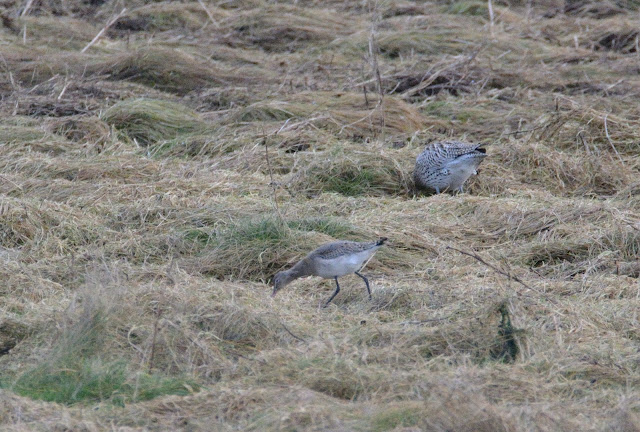 |
Black Tailed Godwit & Curlew
|
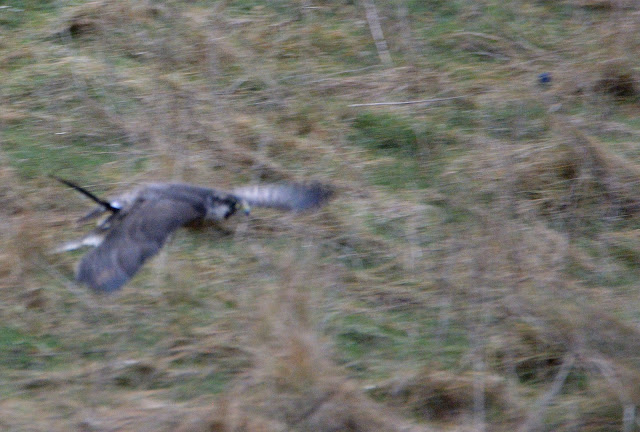 |
| Peregrine |
 |
Shelduck & Carrion Crow
|
 |
| Lapwing |
 |
Little Egret
|
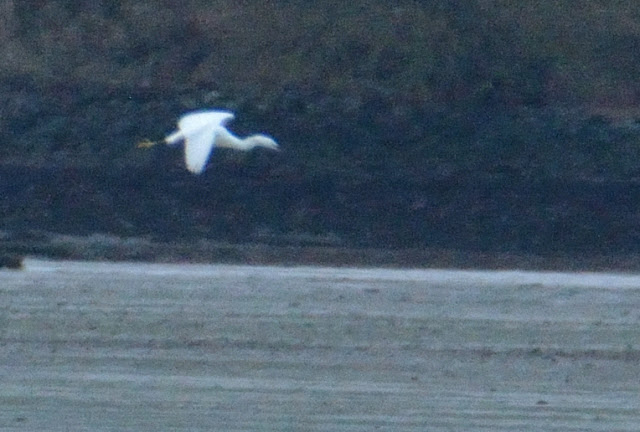 |
Little Egret
|
 |
Lapwing, Carrion Crow & Curlew(?)
|
 |
| Redshank |
 |
| Starling |
 |
| Curlew |
 |
Pink Foooted Goose
|
 |
Little Egret
|
 |
| Greenshank |
 |
| Greenshank |
 |
| Redshank |
 |
| Teal |
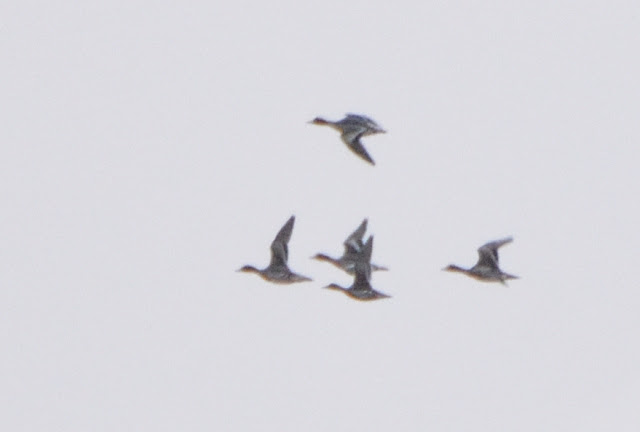 |
| Wigeon |
 |
| Lapwing |
 |
| Buzzard |
 |
Great Northern Diver
|
 |
Great Northern Diver
|
 |
Great Northern Diver
|
 |
Great Northern Diver
|
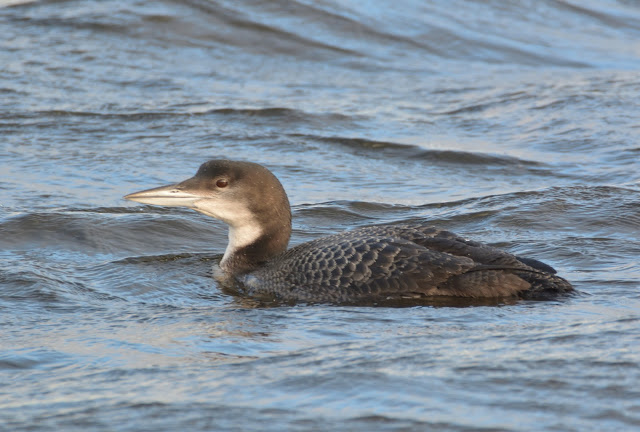 |
Great Northern Diver
|
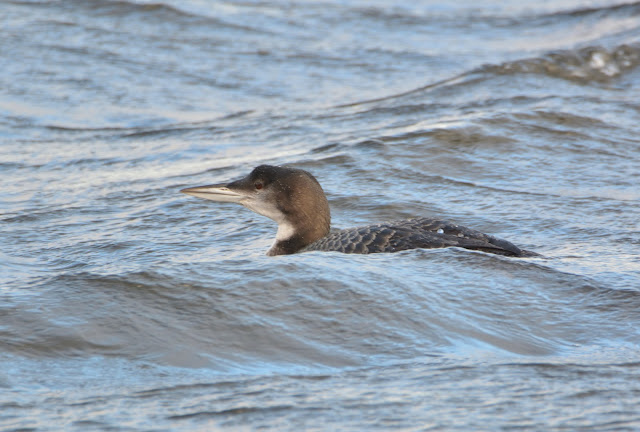 |
Great Northern Diver
|
 |
| Goldeneye |
 |
Wigeon, Oystercatcher, Herring Gull & Teal
|
 |
Great Black Backed Gull
|
 |
Bar Tailed Godwit, Knot & Mallard
|
 |
| Buzzard |
 |
| Kestrel |
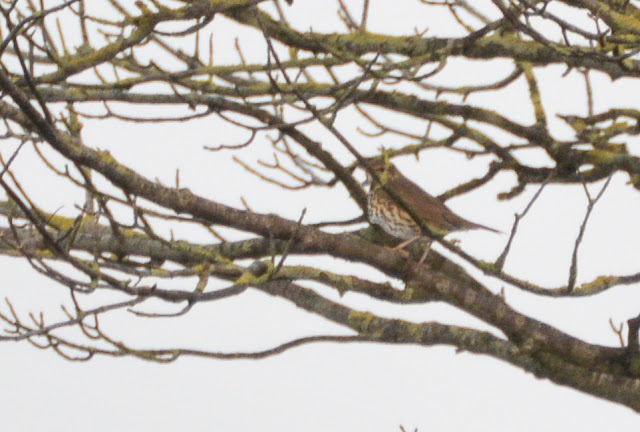 |
Song Thrush
|
 |
Common Scoter
|
 |
Long Tailed Duck
|
 |
Red Throated Diver & Long Tailed Duck
|
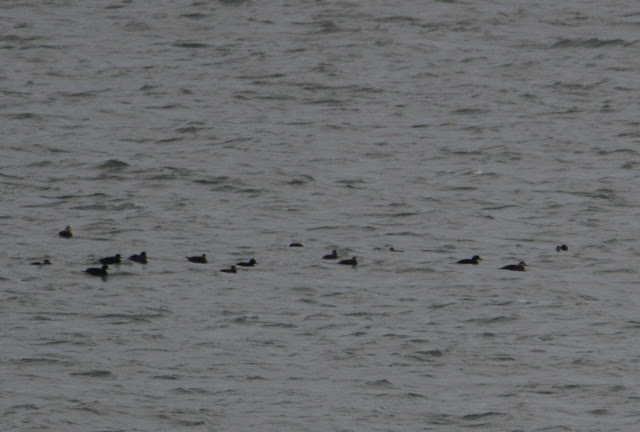 |
Common Scoter
|
 |
Common Scoter
|
 |
Yellowhammer & Goldfinch
|
 |
Reed Bunting & Goldfinch
|
 |
Little Grebe
|
 |
| Cormorant |
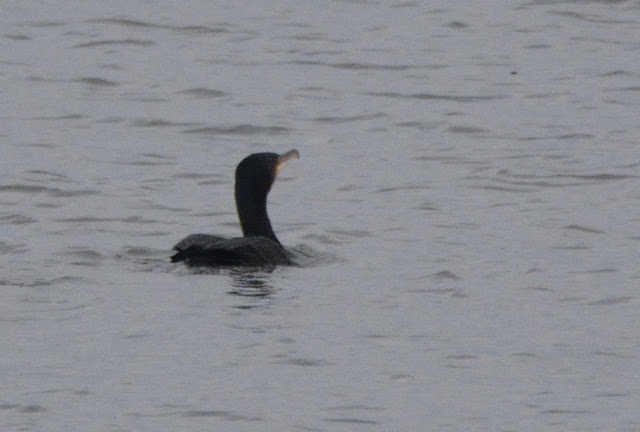 |
| Cormorant |
 |
Red Throated Diver
|
 |
Pied Wagtail
|
 |
Pink Footed Goose
|
Birds - Bar Tailed Godwit, Blackbird, Black Headed Gull, Black Tailed Godwit, Blue Tit, Buzzard, Carrion Crow, Chaffinch, Coal Tit, Collared Dove, Common Gull,
Common Scoter, Cormorant,
Corn Bunting, Curlew, Dunlin, Dunnock, Eider, Goldcrest, Goldeneye, Goldfinch, Great Black Backed Gull,
Great Northern Diver, Great Tit,
Greenshank, Grey Wagtail, Herring Gull, House Sparrow, Jackdaw, Kestrel,
Kingfisher, Knot,
Lapwing,
Linnet, Little Egret, Little Grebe, Long Tailed Duck, Mallard,
Meadow Pipit, Mistle Thrush, Mute Swan, Oystercatcher,
Peregrine, Pied Wagtail, Pink Footed Goose, Red Breasted Merganser, Redshank,
Red Throated Diver, Reed Bunting, Robin, Feral Pigeon, Rock Pipit, Rook,
Shelduck, Siskin,
Skylark, Song Thrush, Starling, Teal,
Tree Sparrow, Treecreeper,
Twite, Wigeon, Woodpigeon, Wren,
Yellowhammer.















































